CG Trader
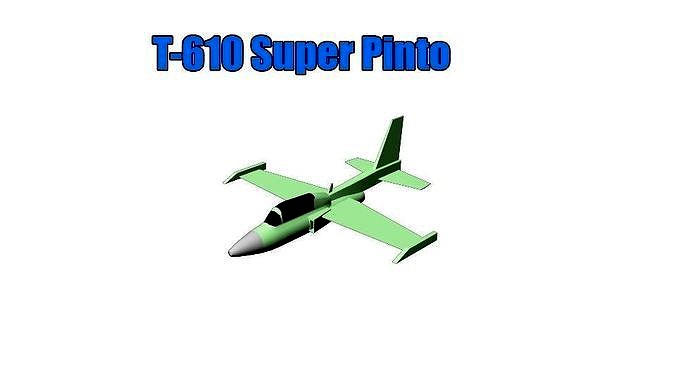
T-610 Super Pinto
by CG Trader
Last crawled date: 1 year, 11 months ago
The T-610 Super Pinto started as a 1968 conversion of the United States Navy's Temco TT Pinto two-seat jet trainer. AJI modified the aircraft for light attack by changing the powerplant with the General Electric CJ610-6 turbojet engine and extending the fuselage by 10 inches. It featured a modified wing, wingtip fuel tanks, and a swept vertical stabilizer as well as provision for two underwing hardpoints. The prototype first flew on June 28, 1968. The aircraft flew very well and later improved in power three fold, with only 20 pounds more weight compared to the original design. The United States Air Force (USAF) evaluated the Super Pinto during its PAVE COIN program in 1971 but it did not receive a contract with either the USAF or Turkey.[citation needed] Consequently, the company decided to sell the whole project and struck a deal with the Philippine government, whereby AJI relinquished all rights on the Super Pinto design. In a US$1.25 million deal, the Philippine Air Force (PAF)'s Self-Reliance Development Wing bought the rights for the work drawings, patents, design, flight test data, and process sheets for the manufacture of the aircraft on November 8, 1976, as well as one U.S.-built prototype, which became the first Philippine T-610 (now known as the Calí or hawk), and an additional fuselage. The deal included the exclusive rights to market military and commercial versions internationally.
TT-1 Pinto in flight in 1957. The second T-610 was produced locally, and both aircraft were flight tested satisfactorily in Manila, creating high expectations to build a national aircraft industry in the Philippines. They carried the numbers 44233 and 44234, which echoed U.S. Navy Pinto serials 144233 and 144234. The two aircraft differed mainly in that 233 had the one-piece canopy of the original Pinto, while 234 had a two-piece canopy. It would be logical to conclude that 44233 was originally the Navy's 144233, but there is no evidence of this. Both Navy Pintos are still existent on the American civil register and pretty much active. The Calí program started to encounter economic problems, and after the Marcos administration collapsed, the project was shelved. The resurrection of the Calí program was considered on various occasions. In the mid-1980s, four separate versions were targeted for possible production: a single-seat light strike aircraft that could carry up to 1,600 kg of stores for COIN operations; a tandem-seat primary jet trainer; a quick change version of the trainer that could be rapidly converted as a strike aircraft; and an executive version with a wider pressurized cabin seating five passengers. At that time, the PAF foresaw the Calí as a possible replacement for no less than its Beechcraft T-34 Mentors, SIAI-Marchetti SF.260s, North American T-28D Trojans, Lockheed T-33s and even its North American F-86F Sabres, with a planned operational life of about 15 years. The commonality of the CJ610-6 engine with the country's Northrop F-5 fighter force was especially viewed as a key element. WOW SUPER aircraft airplane jet vehicle air airliner jumbo fighter force military plane plane boeing 737 a380 800 commercial passenger boeing 747 commercial aircraft military aircraft military vehicle fighter jet fighter jet jet fighter jet plane military vehicle
TT-1 Pinto in flight in 1957. The second T-610 was produced locally, and both aircraft were flight tested satisfactorily in Manila, creating high expectations to build a national aircraft industry in the Philippines. They carried the numbers 44233 and 44234, which echoed U.S. Navy Pinto serials 144233 and 144234. The two aircraft differed mainly in that 233 had the one-piece canopy of the original Pinto, while 234 had a two-piece canopy. It would be logical to conclude that 44233 was originally the Navy's 144233, but there is no evidence of this. Both Navy Pintos are still existent on the American civil register and pretty much active. The Calí program started to encounter economic problems, and after the Marcos administration collapsed, the project was shelved. The resurrection of the Calí program was considered on various occasions. In the mid-1980s, four separate versions were targeted for possible production: a single-seat light strike aircraft that could carry up to 1,600 kg of stores for COIN operations; a tandem-seat primary jet trainer; a quick change version of the trainer that could be rapidly converted as a strike aircraft; and an executive version with a wider pressurized cabin seating five passengers. At that time, the PAF foresaw the Calí as a possible replacement for no less than its Beechcraft T-34 Mentors, SIAI-Marchetti SF.260s, North American T-28D Trojans, Lockheed T-33s and even its North American F-86F Sabres, with a planned operational life of about 15 years. The commonality of the CJ610-6 engine with the country's Northrop F-5 fighter force was especially viewed as a key element. WOW SUPER aircraft airplane jet vehicle air airliner jumbo fighter force military plane plane boeing 737 a380 800 commercial passenger boeing 747 commercial aircraft military aircraft military vehicle fighter jet fighter jet jet fighter jet plane military vehicle
Similar models
cg_trader
$49

Not Textured B-52
...ir force jet airline missile army military weapons stratofortress military aircraft fighter jet fighter jet jet fighter jet plane
cg_trader
$37

Aircraft
...e aircraft military jet gladiators navy aviation us air force sky military aircraft fighter jet fighter jet jet fighter jet plane
cg_trader
$5

Raytheon T-6A Texan
...e usaf air force t 6a texan ii t6 t 6 raytheon trainer aircraft airplane military training plane usaf air force military aircraft
cg_trader
$39
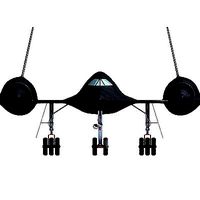
Detailed Lockheed A-12
...e fighter flight air wingsplane jet missile army military weapons military aircraft fighter jet fighter jet jet fighter jet plane
cg_trader
free

Military Plane
...raft jet flight travel war airport vehicle fighter samsonite commercial military vehicle fighter jet jet fighter military vehicle
cg_trader
$15

aircraft
...ft military aircraft military vehicle private aircraft fighter jet fighter jet jet fighter jet plane military vehicle private jet
grabcad
free

North American F-100D Super Sabre
...af jet fighters, it was the first usaf fighter capable of supersonic speed in level flight.
test layout to understand the shape.
cg_trader
$15

Private Jet
...ne 747 a380 commercial aircraft military aircraft military vehicle fighter jet fighter jet jet fighter jet plane military vehicle
cg_trader
$5

Military Aircraft
...er airforce air force army military vray aircraft warplane weapon military aircraft fighter jet fighter jet jet fighter jet plane
cg_trader
$5

Military Aircraft
...er airforce air force army military vray aircraft warplane weapon military aircraft fighter jet fighter jet jet fighter jet plane
Pinto
3ddd
$1
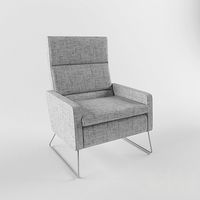
Bo Concept / Pinto
...bo concept / pinto
3ddd
boconcept
bo concept pinto
3ddd
$1

Eglo / PINTO 91327
...eglo / pinto 91327
3ddd
eglo
подвес pinto 91327 eglo 700х1100мм
3ddd
$1

Alberto Pinto / Camelia
... тарелка
тарелки alberto pinto из коллекции camelia, 6 шт.
сайтhttp://www.pintoparis.com/en/1/collections/index
3ddd
free

Alberto Pinto / Potager
... тарелка
тарелки alberto pinto из коллекции potager, 10 шт.
сайтhttp://www.pintoparis.com/en/1/collections/index
turbosquid
$49

Pinto Horse
... available on turbo squid, the world's leading provider of digital 3d models for visualization, films, television, and games.
turbosquid
$24

Sofa Pinto
... available on turbo squid, the world's leading provider of digital 3d models for visualization, films, television, and games.
turbosquid
$15

Casa Pinto Armchair
...royalty free 3d model casa pinto armchair for download as max on turbosquid: 3d models for games, architecture, videos. (1314277)
3ddd
free

Eglo / Pinto 1
...треть светильники можна на сайте.http://www.eglo.com/international/produkte/interior-lighting/lighting-families/pinto-1
cg_studio
$99

Ford Pinto 19713d model
...l
cgstudio
.3ds .c4d .fbx .max .obj - ford pinto 1971 3d model, royalty free license available, instant download after purchase.
3d_export
$5

Ceiling lamp Eglo collection Modern model Pinto 3D Model
... 3d model
3dexport
ceiling lamp eglo modern pinto
ceiling lamp eglo collection modern model pinto 3d model adianta 62812 3dexport
610
design_connected
$16

Silver 610S
...silver 610s
designconnected
interstuhl büromöbel silver 610s computer generated 3d model. designed by teherani, hadi.
3ddd
$1

AVENANTI VR 610
...avenanti vr 610
3ddd
avenanti
avenanti vr 610. моделировал по фото
3ddd
$1

ARIZZI 610/12
...arizzi 610/12
3ddd
arizzi
люстра arizzi 610/12. моделилась по фото из каталога.
turbosquid
$20

Nokia lumia 610.
... available on turbo squid, the world's leading provider of digital 3d models for visualization, films, television, and games.
turbosquid
$8

htc desire 610
... available on turbo squid, the world's leading provider of digital 3d models for visualization, films, television, and games.
design_connected
$29

DS-610 Corner Sofa
...ds-610 corner sofa
designconnected
de sede ds-610 corner sofa computer generated 3d model. designed by ferrarini, mario.
3d_export
$49

Nokia Lumia 610 3D Model
...dows phone 75 cell phone mobile cellular smartphone touchscreen touch screen 4g
nokia lumia 610 3d model humster3d 57652 3dexport
cg_studio
$49

HTC Desire 610 Gray3d model
...max .obj .mb .lwo .fbx .c4d .3ds - htc desire 610 gray 3d model, royalty free license available, instant download after purchase.
3ddd
$1

Howard Miller 610 - 900
... howard miller
610-900 howard miller floor grandfather clock
depth 34 cm
height 213 cm
width 58 cm
turbosquid
$15

Htc desire 610 blue
... available on turbo squid, the world's leading provider of digital 3d models for visualization, films, television, and games.
Super
3ddd
free

super impossible
...super impossible
3ddd
kartell , super impossible
cтул super impossible фирмы kartell
3d_ocean
$19
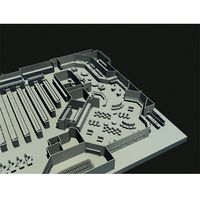
Super market
...ean
chain shop large super market 3d model low poly market low poly super market shop super market
low poly model of supermarket.
3d_export
$15

super mario
...r mario.<br>superstar, super mario superhero.<br>сheerful and courageous.<br>new exciting adventures await him.
3d_ocean
$30

Super Hero
...hero mask ninja super hero sword zbrush
super hero created in zbrush 4.0 hero body—6 division levels 1.668 poly to 1.705mil poly.
3d_export
$25

super promotion
...super promotion
3dexport
3d_export
$5
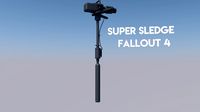
super sledge
...super sledge
3dexport
...
3ddd
$1

Longboard Super Sonic
...longboard super sonic
3ddd
лонгборд
longboard super sonic
turbosquid
$60

Super Soldier
...quid
royalty free 3d model super soldier for download as fbx on turbosquid: 3d models for games, architecture, videos. (1211725)
turbosquid
$60

Super Soldier
...quid
royalty free 3d model super soldier for download as fbx on turbosquid: 3d models for games, architecture, videos. (1207493)
turbosquid
$55
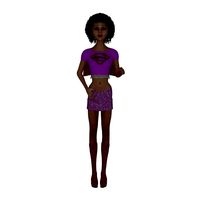
Super Hero
...squid
royalty free 3d model super hero for download as blend on turbosquid: 3d models for games, architecture, videos. (1387035)
T
design_connected
$11

T & T
...t & t
designconnected
dark t & t computer generated 3d model. designed by de ryck, christophe.
3d_export
$5
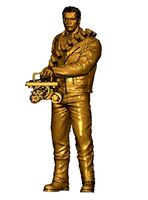
t-800
...t-800
3dexport
t-800
3ddd
$1
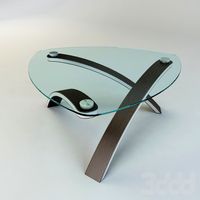
Table T
...table t
3ddd
журнальный
table t
3ddd
free

T-Rex
...t-rex
3ddd
t-rex
rrrrrr
3d_export
$5
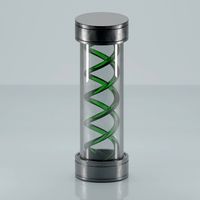
t-virus
...t-virus
3dexport
it's t-virus
3d_export
$5

T-26T
...t-26t
3dexport
artillery tractor on the t-26 chassis ussr
3ddd
$1

T 45
...t 45
3ddd
t-45
кабинет руководителя t 45
12 предметов
подробнее:http://www.prezident-mebel.ru/index.php?productid=1541
3ddd
free

SAFE T
...safe t
3ddd
огнетушитель
креативные огнетушители от компании safe t
3d_export
free
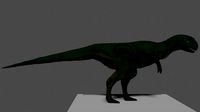
t-rex
...t-rex
3dexport
t-rex have normal map and base color textures
3d_export
$75
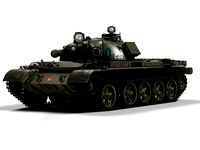
T-55
...nally, but these improvements made the tank more efficient and lethal. the t-55 was officially adopted by the soviet army in 1958
